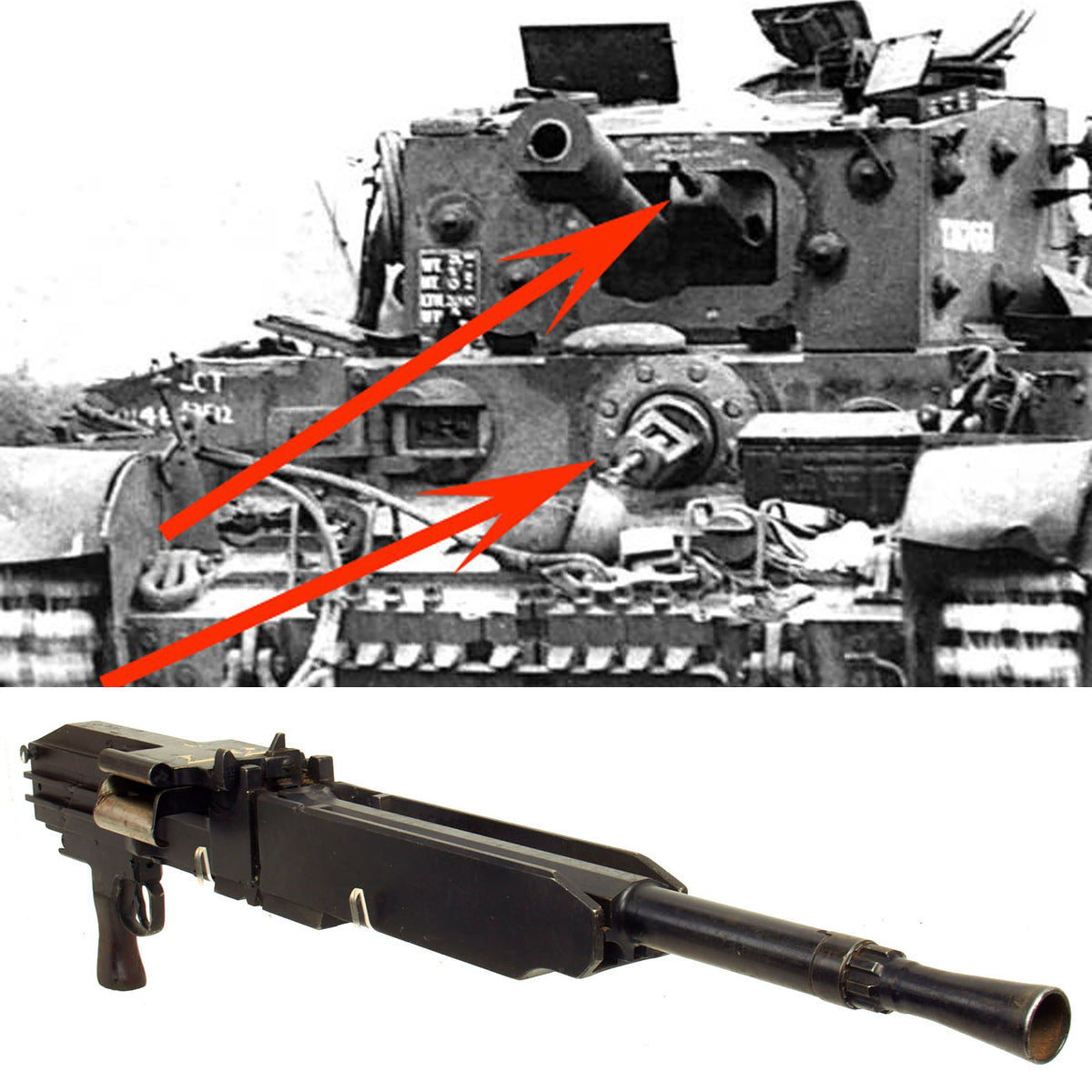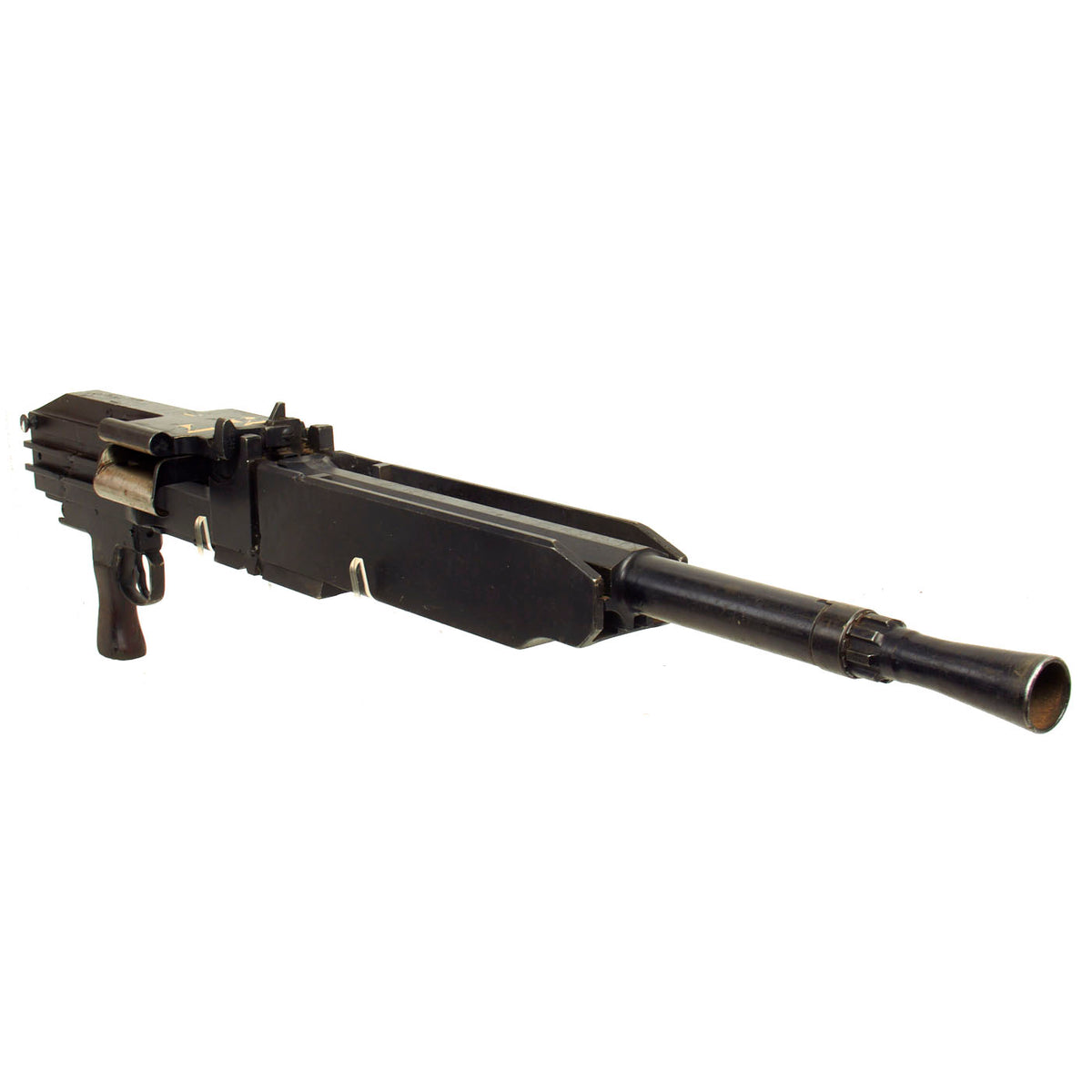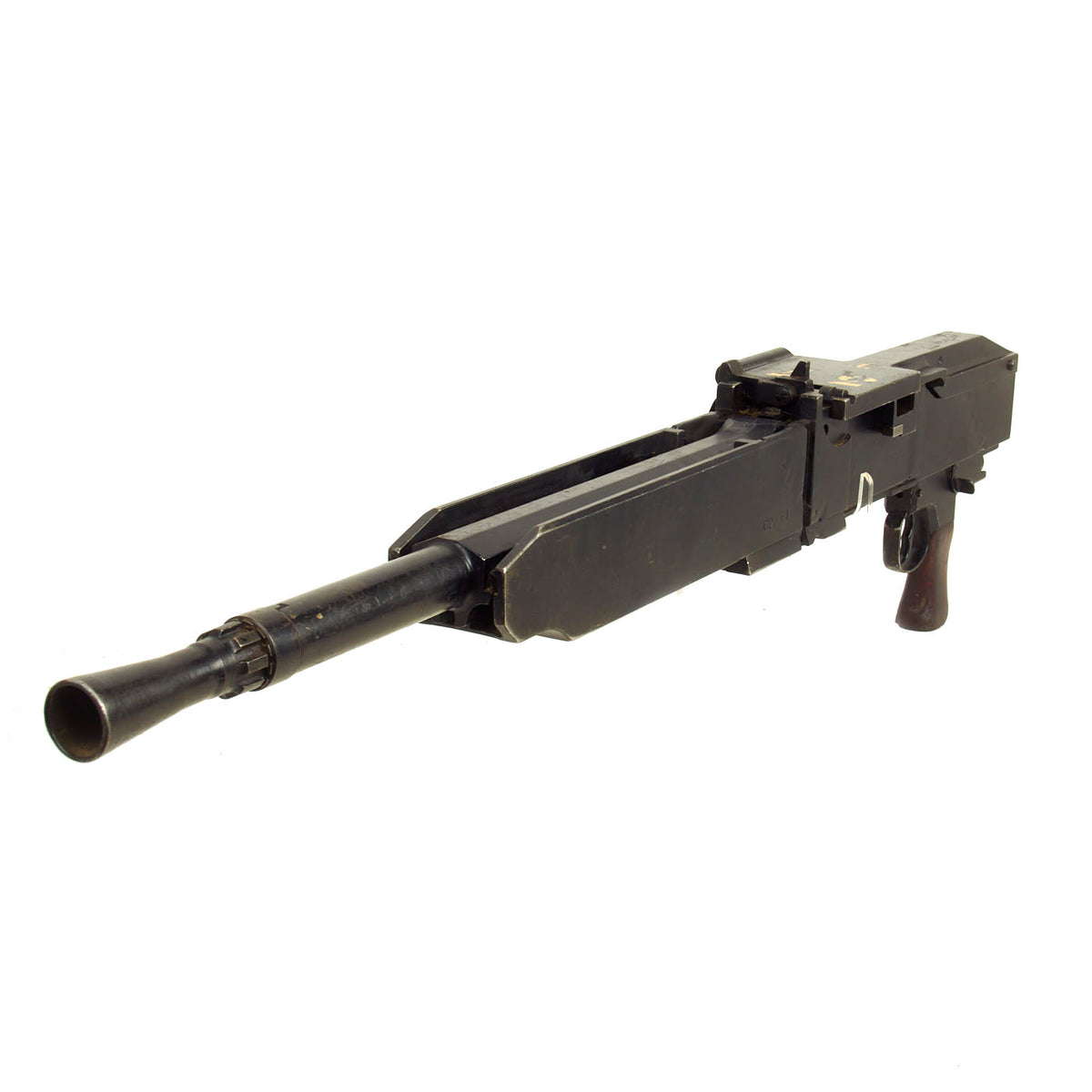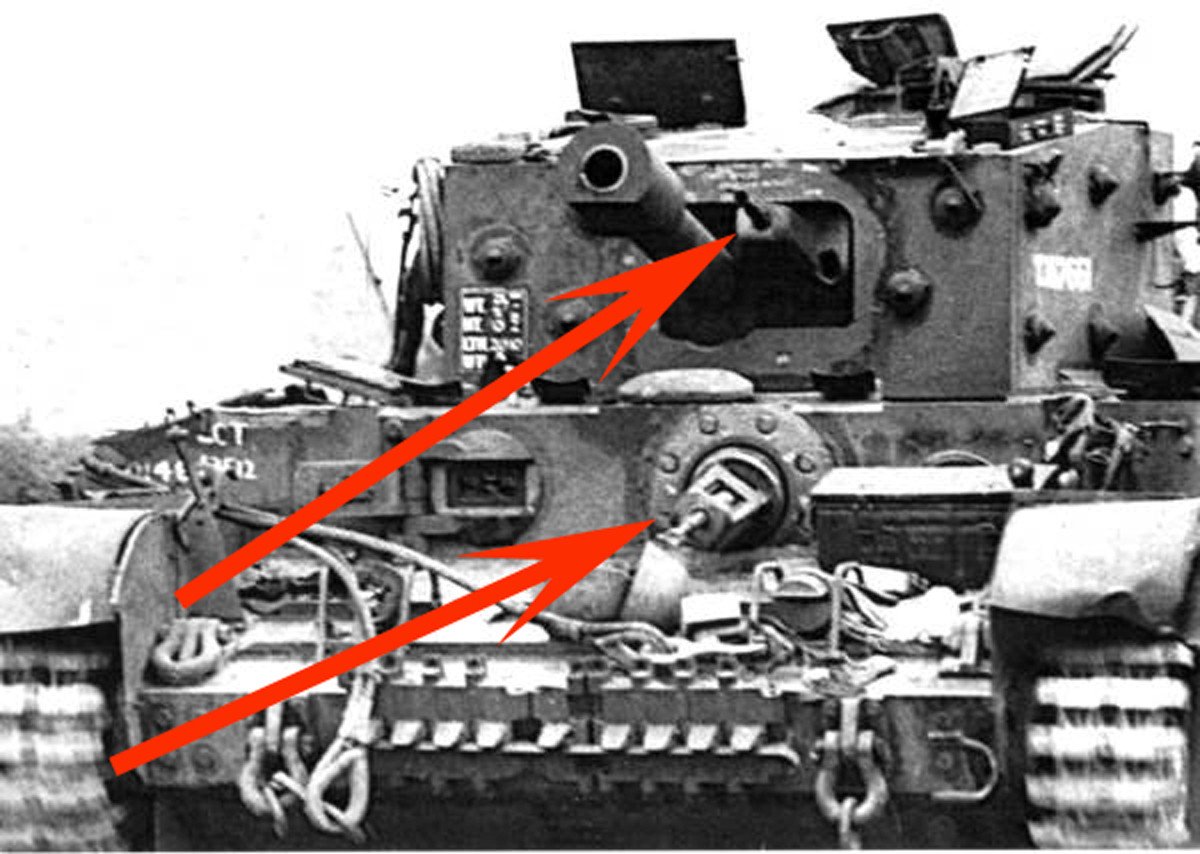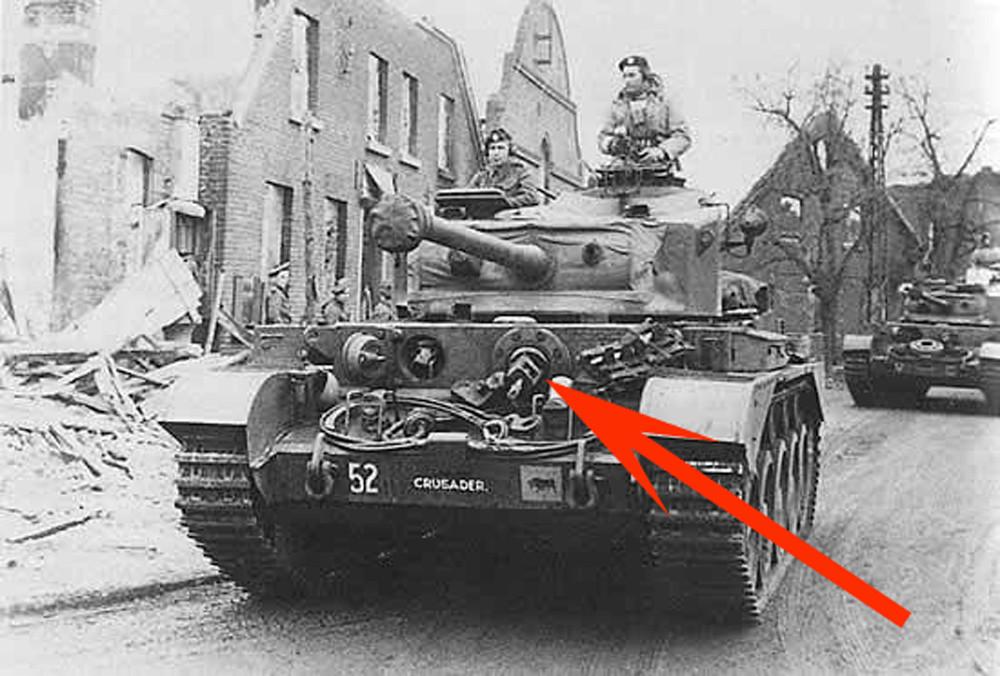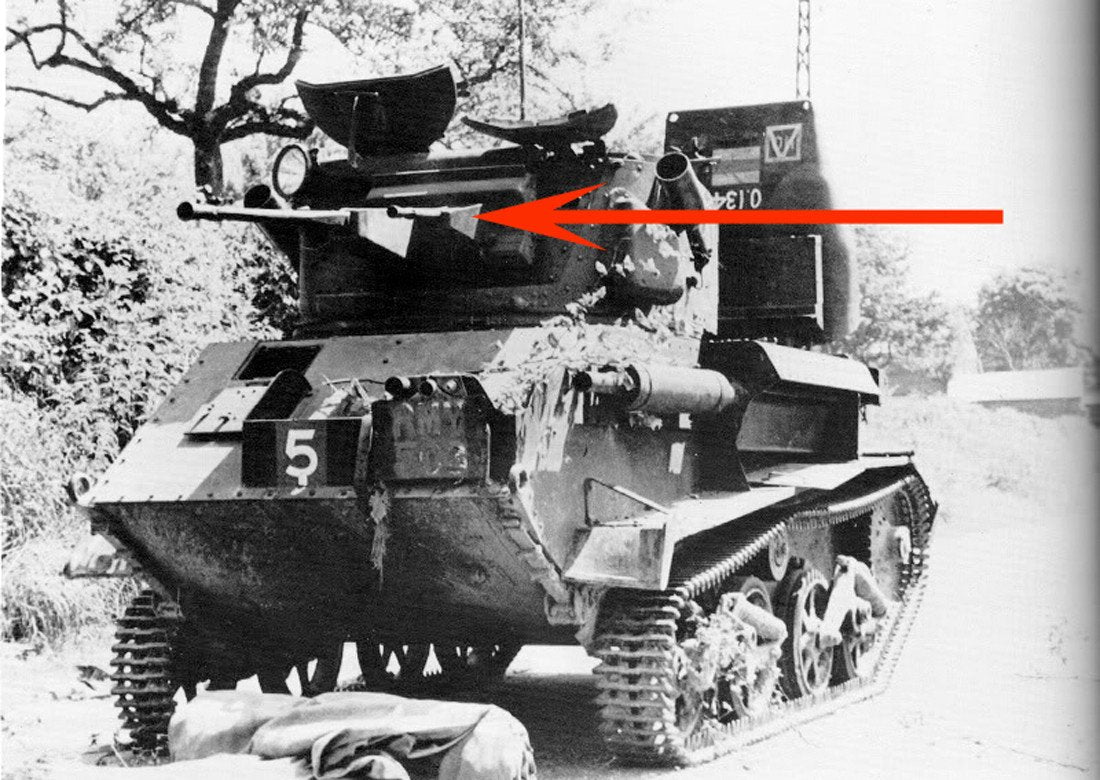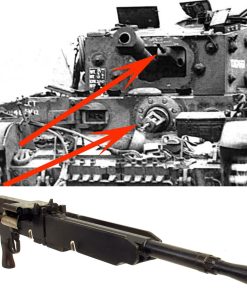Original British BESA 7.92mm Mark III Display Machine Gun – As Used in Armored Vehicles Original Items
$ 1.495,00 $ 373,75
Original Item: Only one Available. This is a fantastic BESA 7.92mm Mark III Display Machine gun, made using a BATF compliant non-firing totally inert dummy re-welded original receiver with 30% completely replaced with solid steel. Many of the internal components were also deactivated and welded into place inside the display gun, giving it a hefty 52.3lb weight. At 43.5 inches long, this is definitely an impressive display gun!
Truly heavy and massive! The British BESA machine gun was an adaptation of the Czechoslovakian MG 37, manufactured by Birmingham Small Arms Company (BSA). They had signed a license agreement with the Czech designer Československá zbrojovka to manufacture the gun in the UK, and after approval by the War Department in 1938, production began in 1939. The machine gun was used very widely in World War II by British forces as an AFV (armored fighting vehicle) gun, in both the coaxial and bow-mounted configurations. The bolt and internal action bears a striking resemblance to that used in the famous British BREN light machine gun, also derived from a Czechoslovakian design. Both Czech guns were used in large quantities by the German Wehrmacht during the war.
Although ungainly looking, the BESA was extraordinarily durable, and anyone with an interest in automatic weapons of the WW II era should take a look at it. The massiveness of the gun comes from the receiver, which is one very large, solid machined block of steel. The very massiveness of the gun made is especially suitable for use in armored vehicles. Guns made like this could not be made today, simply because of the huge cost of the metal work involved.
Unlike most other British rifle-caliber small arms of the war, the BESA was not chambered for the .303 British rimmed cartridge. Instead, it retained the 7.92 x 57 mm caliber of the original Czech design. This eliminated the requirement for extensive redesign. It added an additional caliber to production requirements but also allowed the use of captured German 7.92 ammunition.
Original markings are mostly preserved on the gun, with serial numbers marked on the left side of the receiver, and a different number marked on the top cover. These were in service for decades, so parts swapping was very common. Painted with a very attractive gloss black, this is more than ready to display! All you need now is the AFV!
The Mark II version entered service in June 1940, modified with a selector to give a high rate of fire (750–850 rounds per minute) for close combat or focused targets or a low rate of fire (450–550 rounds per minute) for long-range combat or area targets. The design was modified to be more rapidly and economically produced and three simplified models, the Mark II*, Mark III and Mark III*, entered service in August 1943. The Mark II* was a transitional model designed to use the new simplified parts but was compatible with the Mark II. The Mark III and Mark III* versions did away with the rate selector and had simplified parts like the Mark II* but were incompatible with the Mark II. The Mark III had a fixed high rate of fire (750–850 rpm) and the Mark III* had a fixed low rate of fire (450–550 rpm).
The earlier wartime Mark I, Mark II and Mark II* versions of the Besa 7.92 mm were declared obsolete in 1951 and all Mark III versions were converted to Mark III*. The Mark III/2 introduced in 1952 was a conversion of the Mark III* with a new bracket and body cover. The later Mark III/3 introduced in 1954 was a conversion of the Mark III/2 that replaced the barrel and sleeve and made the gas vents larger on the gas cylinder to make it easier to use belts of mixed ammunition. The post-war Mark III/2 and Mark III/3 remained in service until the late 1960s.
Fast Shipping with Professional Packaging
Thanks to our longstanding association with UPS FedEx DHL, and other major international carriers, we are able to provide a range of shipping options. Our warehouse staff is expertly trained and will wrap your products according to our exact and precise specifications. Prior to shipping, your goods will be thoroughly examined and securely secured. We ship to thousands clients each day across multiple countries. This shows how we're dedicated to be the largest retailer on the internet. Warehouses and distribution centres can be located throughout Europe as well as the USA.
Note: Orders with more than one item will be assigned a processing date depending on the item.
Before shipping before shipping, we'll conduct a thorough inspection of the items you have ordered. Today, the majority of orders will be delivered within 48 hours. The delivery time will be between 3-7 days.
Returns
The stock is dynamic and we cannot completely manage it because multiple stakeholders are involved, including our factory and warehouse. So the actual stock may alter at any time. It's possible that you may not receive your order once the order has been made.
Our policy is valid for a period of 30 days. If you don't receive the product within 30 days, we are not able to issue a refund or an exchange.
You can only return an item if it is unused and in the same state as the day you received it. You must have the item in its original packaging.
Related products
Uncategorized
Uncategorized
Uncategorized
Uncategorized
Uncategorized
Uncategorized
Uncategorized
Uncategorized
Armoured Fighting Vehicles of the World: AFVs of World War One (Hardcover Book) New Made Items
Uncategorized
Uncategorized
Armored Burgonet Helmet & Polearm from Scottish Castle Leith Hall Circa 1700 Original Items
Uncategorized
Uncategorized
Uncategorized
Angolan Rebel 1970s era 60mm Inert Display Mortar from Angolan Civil War Original Items
Uncategorized
Uncategorized
Uncategorized
Uncategorized
Uncategorized
Uncategorized
Uncategorized
Uncategorized
